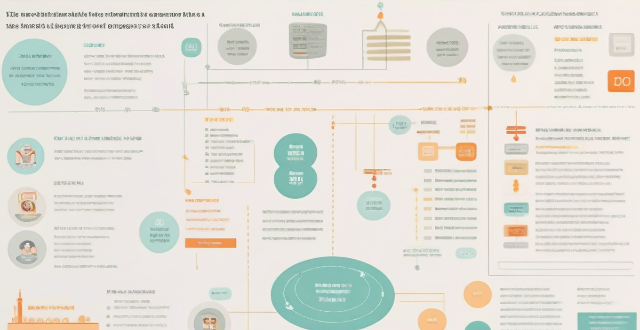Go Patient

How does telemedicine improve patient care and access to health services ?
Telemedicine improves patient care and access to health services by increasing accessibility for both rural and urban patients, enhancing continuity of care, offering cost efficiency, providing a better patient experience through personalized care and convenience, and enabling data-driven decision making.

What are the recommended disinfection procedures for healthcare facilities to ensure patient safety ?
Healthcare facilities must implement strict disinfection procedures to ensure patient safety and prevent disease spread. These include using PPE, practicing hand hygiene, cleaning and disinfecting surfaces, sterilizing critical instruments, and managing waste properly. Specific areas of concern are patient rooms, operating rooms, labs, waiting areas, and public spaces. Regular training, surveillance, and environmental monitoring are essential for maintaining effective disinfection practices.

How are robotics changing surgery and patient care in hospitals ?
The integration of robotics in hospitals is revolutionizing surgery and patient care by enhancing precision, reducing recovery time, increasing accessibility to specialized care, improving training and education, streamlining operations, and fostering personalized medicine. Robotic-assisted surgery offers greater accuracy and minimally invasive techniques, leading to quicker healing and less trauma for patients. Telerobotic surgery expands access to expert care across geographical barriers. Simulation technologies provide a safe environment for surgical practice and the development of new techniques. Automation improves hospital efficiency, from dispensing systems to record management. Personalized medicine is facilitated through customized treatment plans tailored to individual patient needs. Overall, robotics is transforming healthcare delivery, making it more efficient, effective, and accessible.

How is blockchain technology being used to secure patient data in the healthcare sector ?
Blockchain technology is transforming healthcare by securing patient data through decentralization, immutability, encryption, and smart contracts. It also facilitates interoperability, standardizes data formats, and enables supply chain management and audit trails. This technology enhances patient care and privacy, with potential for further innovations in the future.

How does predictive analytics help in disease prevention and management within the healthcare system ?
Predictive analytics in healthcare can significantly improve disease prevention and management by identifying patterns and trends in patient data. It offers benefits such as early intervention, personalized treatment plans, enhanced operational efficiency, and informed decision-making. Applications include disease surveillance, chronic disease management, and patient care optimization. However, challenges like data privacy, quality, and the need for skilled data analysts must be addressed to fully realize its potential.

Are there benefits to waiting for a product to go on sale rather than buying it immediately ?
Waiting for a product to go on sale rather than buying it immediately can bring several benefits, including saving money through discounted prices and budget-friendly options. It also allows for more value through bundled deals and the potential to upgrade to newer models. Waiting helps avoid impulse buying by providing more time to decide and potentially avoiding buyer's remorse. Taking advantage of seasonal sales during holidays or end-of-season can lead to significant savings. Tax benefits may also be available in certain circumstances. Finally, waiting can ensure you get a more mature and refined version of the product as manufacturers have had time to address any initial flaws. Overall, being patient and strategic with purchases can result in numerous financial and practical advantages.

How often should I go to the gym to see results ?
The frequency of gym visits depends on fitness goals, current fitness level, and workout intensity. Factors to consider include: 1. Fitness Goals: - Weight Loss: 3-5 days per week of moderate to high-intensity exercise. - Muscle Building: Strength training 2-3 times per week with rest days. - Endurance Training: Run or cycle 3-4 times per week. - Flexibility/Yoga: Practice daily for best results. 2. Current Fitness Level: - Beginners: Start with 2-3 days per week and gradually increase. - Intermediate: Aim for 3-4 days per week of targeted workouts. - Advanced: Up to 5-6 days per week of specialized training. 3. Intensity of Workouts: - High Intensity: Allow for more recovery time; 2-3 intense sessions per week. - Moderate Intensity: Can be done 3-5 times per week. - Low Intensity: May be done daily, but focus on active recovery. Recommended routines vary depending on the goal, such as cardiovascular exercise and strength training for weight loss, compound exercises for muscle building, long slow distance and interval training for endurance, and daily practice for flexibility and yoga. Tips for success include setting realistic goals, mixing up exercises, listening to your body, and staying consistent. Rest days are important for recovery and growth.

What are some healthy snack options for women on-the-go ?
Being a woman on-the-go can be challenging, especially when it comes to maintaining a healthy diet. However, incorporating nutritious snacks into your routine can help you stay energized and focused throughout the day. Here are some healthy snack options that are perfect for women who are always on the move: ## **Fruits and Vegetables** ### *Apple slices with almond butter* - Thinly slice an apple and spread almond butter on each slice. - This combination provides both fiber and protein, keeping you full and satisfied until your next meal. ### *Carrot sticks with hummus* - Cut carrots into sticks and serve with a side of hummus. - The hummus adds a creamy texture and flavor while providing essential nutrients like iron and calcium. ## **Nuts and Seeds** ### *Trail mix* - Mix together nuts like almonds, walnuts, and pecans with dried fruits like cranberries or blueberries. - Trail mix is easy to pack and offers a variety of flavors and textures. ### *Roasted chickpeas* - Drain and rinse a can of chickpeas, then roast them in the oven with your favorite seasonings. - Chickpeas are high in protein and fiber, making them a satisfying snack option. ## **Greek Yogurt** ### *Plain Greek yogurt with berries* - Mix plain Greek yogurt with fresh berries like strawberries or blueberries. - Greek yogurt is rich in protein and probiotics, which can aid digestion and boost immunity. ### *Greek yogurt parfait* - Layer Greek yogurt, granola, and sliced fruit in a jar or container. - This snack is not only delicious but also visually appealing, making it a great option for breakfast or an afternoon pick-me-up. ## **Energy Bars** ### *Homemade energy bars* - Make your own energy bars using ingredients like oats, nuts, seeds, and dried fruit. - Customize your bars by adding spices like cinnamon or ginger for extra flavor. ### *Store-bought energy bars* - Look for energy bars that are low in sugar and high in protein and fiber. - Be sure to read the labels carefully to avoid added sugars and unnecessary fillers. ## **Smoothies** ### *Green smoothie* - Blend spinach or kale with banana, almond milk, and honey for a refreshing and nutritious drink. - Green smoothies are an excellent way to get your daily dose of vitamins and minerals while on-the-go. ### *Protein smoothie* - Mix protein powder with frozen berries, almond milk, and ice for a post-workout snack or breakfast option. - Protein smoothies can help build muscle and repair tissues after exercise. In conclusion, there are plenty of healthy snack options available for women who are always on-the-go. By choosing nutritious snacks like fruits and vegetables, nuts and seeds, Greek yogurt, energy bars, and smoothies, you can maintain a balanced diet even when life gets busy. Remember to prioritize whole foods and avoid processed snacks whenever possible to ensure optimal health and well-being.

What are some breakfast ideas that are perfect for on-the-go eating ?
When you're in a rush, these breakfast ideas are perfect for on-the-go eating. From smoothie bowls and breakfast burritos to overnight oats and Greek yogurt parfaits, there are plenty of options that are both healthy and satisfying. Egg muffins, avocado toast, peanut butter banana wraps, and protein bars are also great choices. Remember to choose options that are filling, nutritious, and easy to eat while on the go.

What are the treatment options for COVID-19 ?
The text is about the different treatment options for COVID-19. The treatments are divided into symptomatic treatment, antiviral treatment, monoclonal antibodies, convalescent plasma therapy, supportive care, and other potential therapies. Symptomatic treatment includes rest and hydration, pain relievers, and antibiotics if necessary. Antiviral medications such as Remdesivir and Favipiravir may be used in severe cases to suppress the virus. Monoclonal antibodies like Bamlanivimab and Casirivimab and Imdevimab can be used to treat certain patients at high risk of developing severe illness. Convalescent plasma therapy involves collecting blood plasma from recovered patients and transfusing it into active patients. Supportive care includes oxygen therapy, mechanical ventilation, and corticosteroids. Other potential therapies being investigated include interferon, nitazoxanide, and experimental drugs currently in clinical trials.

Can developing countries skip traditional energy sources and go straight to renewables ?
The article discusses the feasibility of developing countries transitioning directly to renewable energy sources, bypassing traditional energy sources. It examines economic, technological, political, and environmental considerations in detail. While there are challenges associated with transitioning to renewable energy, developing countries can certainly skip traditional energy sources and go straight to renewables if they receive adequate financial, technological, and political support. The benefits of doing so include job creation, reduced carbon emissions, and improved local air quality.

Where can I go to register a SIM card in person ?
This guide provides a detailed explanation of where to go for SIM card registration, the required documents and process, tips for a smooth experience, and additional information to help individuals successfully register for a SIM card in person while in China. It covers visiting directly operated service halls of major network operators, necessary documents like a passport, steps involved in the application process, communication tips, and more. By following this guide, individuals can save money on data plans and easily use local apps and services.

What is the best time of year to go on a camping adventure ?
Camping is a wonderful way to connect with nature and enjoy the great outdoors. However, the experience can vary greatly depending on the time of year you choose to go. Here are some factors to consider when deciding on the best time of year for your camping adventure: - Weather Conditions: Spring is a beautiful time to camp, as the flowers are blooming and the temperatures are mild. Summer is the most popular season for camping, as the weather is typically warm and sunny. Fall offers cooler temperatures and vibrant foliage, making it a great time to camp. Winter camping can be a unique and peaceful experience, but it requires proper gear and preparation for cold temperatures and possible snow. - Crowds and Availability: If you want to avoid crowds, plan your trip during the week instead of on weekends. Be aware that national holidays like Memorial Day, Independence Day, and Labor Day tend to draw large crowds to popular campgrounds. Campgrounds can get busy during spring break and summer vacation periods when families take advantage of their children's time off from school. - Activities and Wildlife: Different seasons offer different opportunities for outdoor activities and wildlife viewing. Consider what you hope to do and see while camping: hiking, fishing, wildlife viewing, or water sports.

How do I go about quickly organizing my garage or basement ?
Organizing a garage or basement efficiently involves assessing the situation, decluttering, creating zones, investing in storage solutions, maximizing vertical space, maintaining order, ensuring safety, and adding finishing touches. By categorizing items, using storage bins, shelves, and pegboards, and regularly decluttering, one can transform the space into an organized haven.